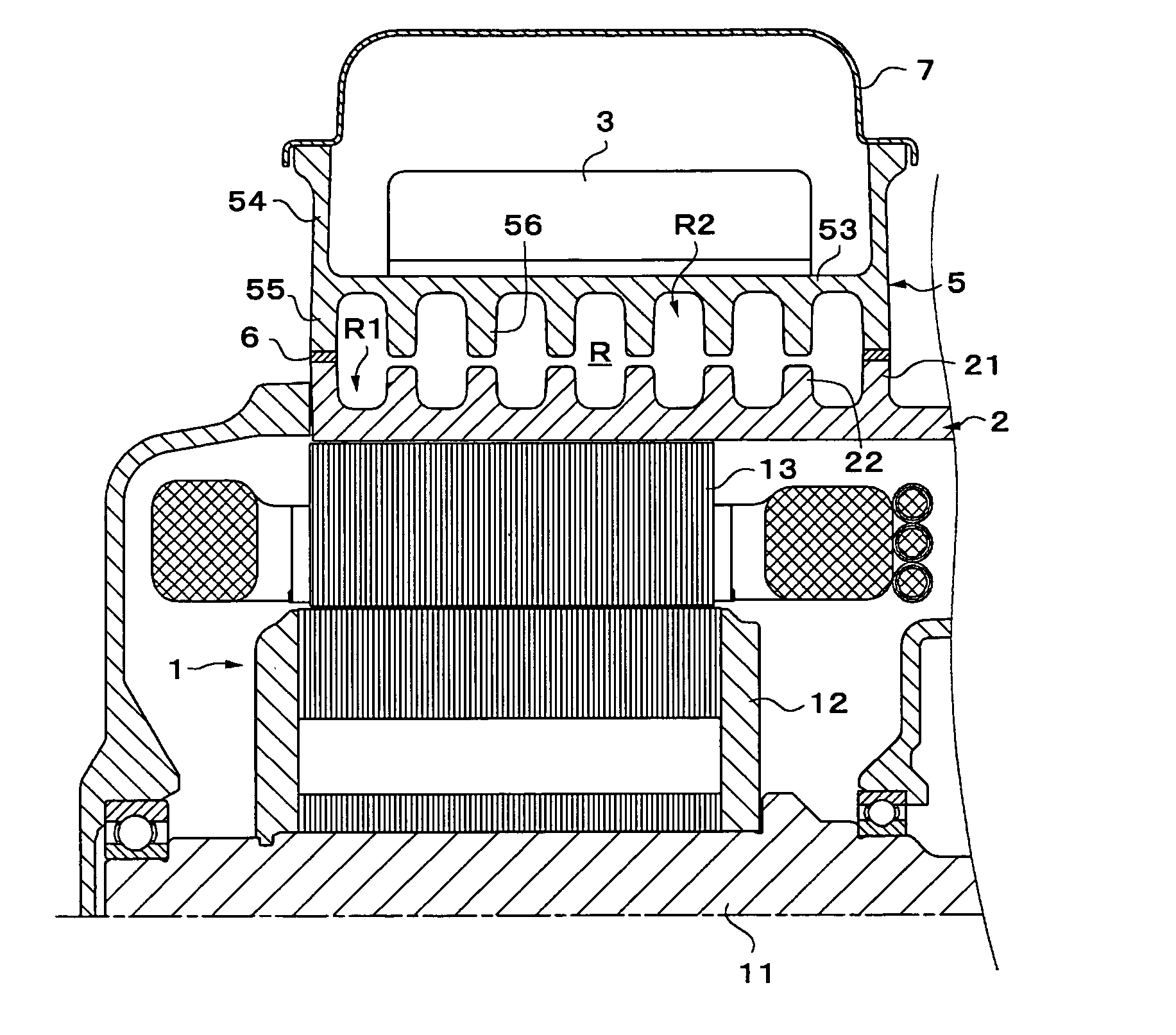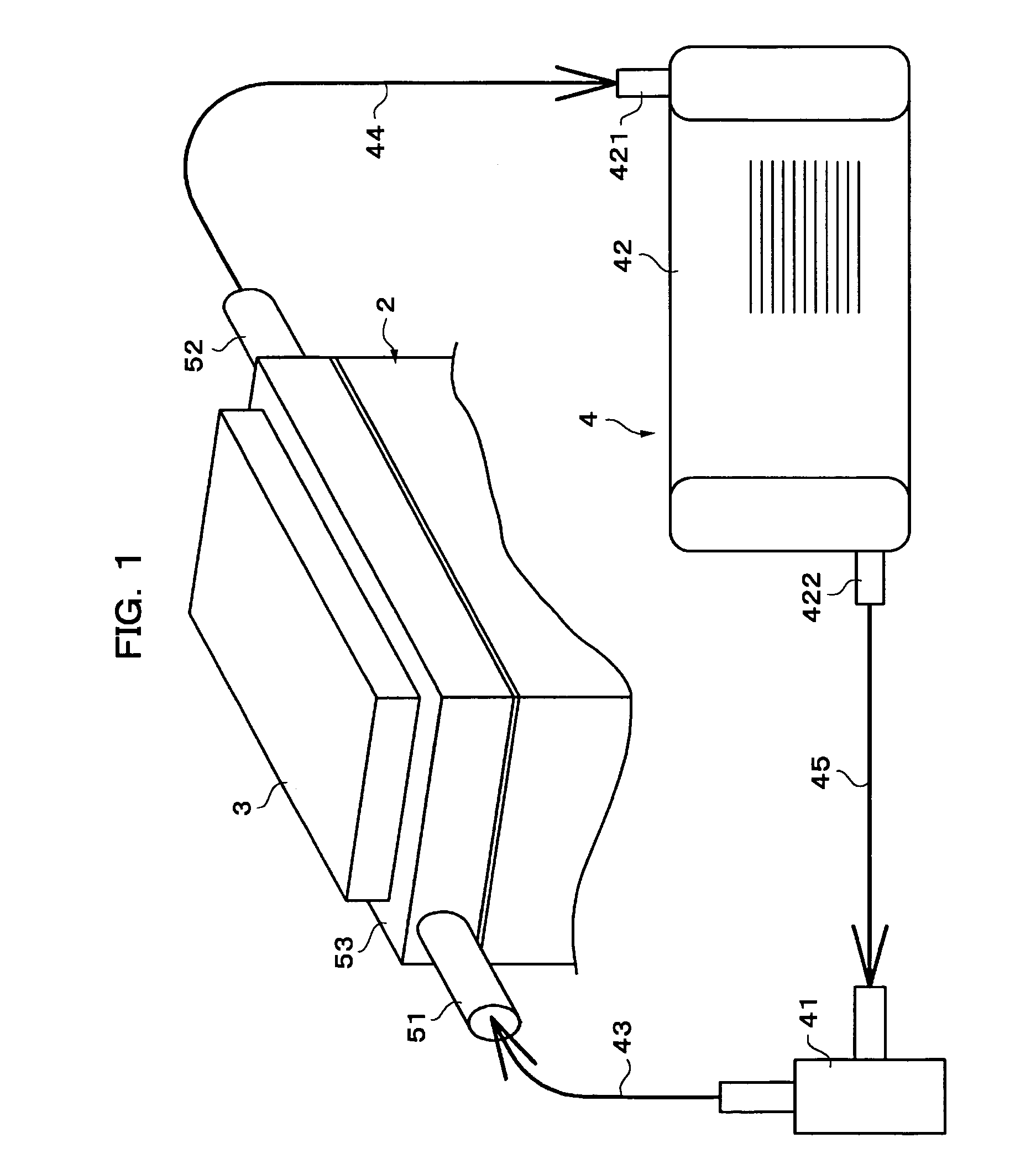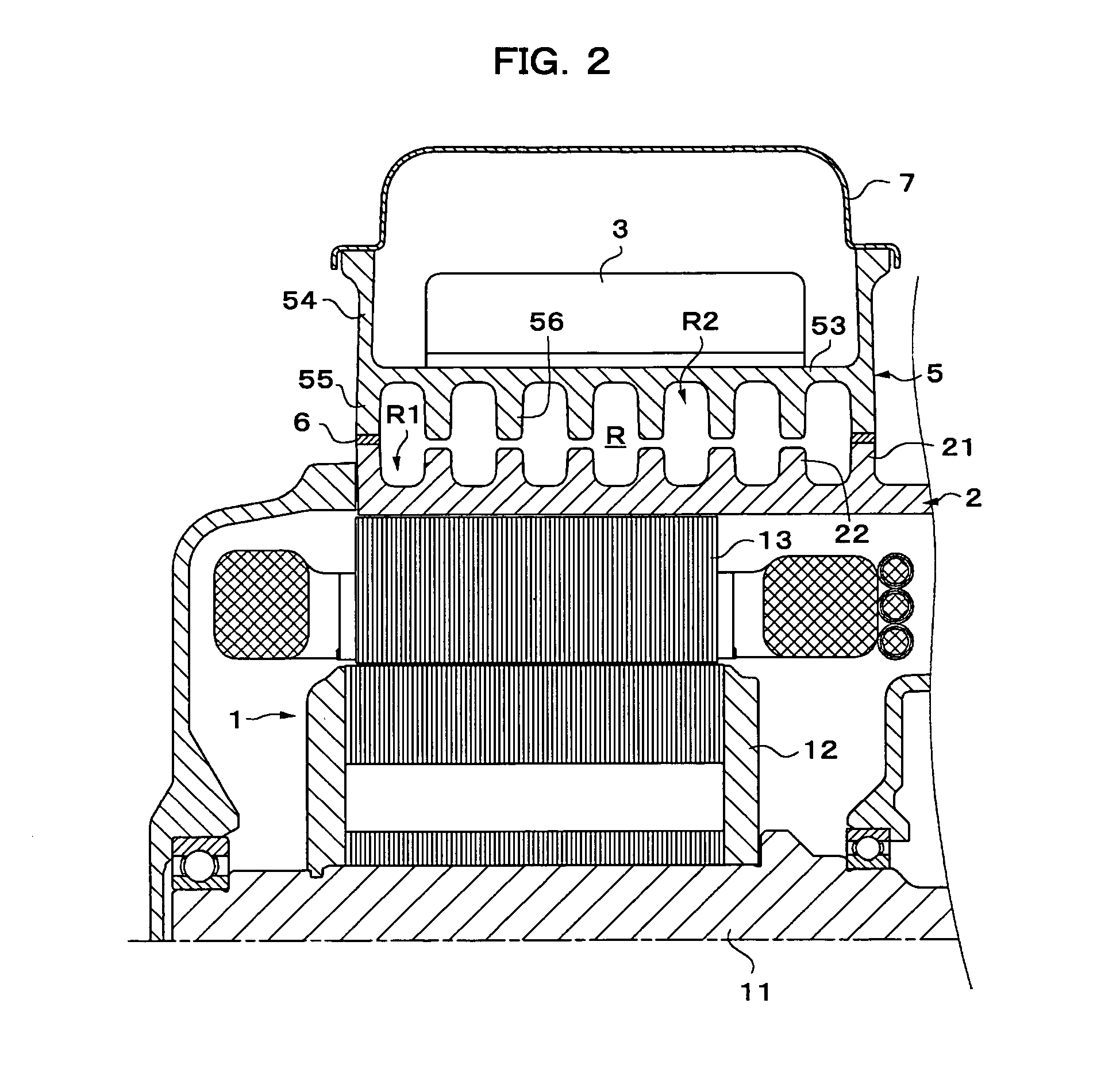Drive device
a technology of drive device and drive shaft, which is applied in the direction of magnetic circuit rotating parts, electric propulsion mounting, magnetic circuit shape/form/construction, etc., can solve the problems of increasing the energy required for driving of electric motors, reducing the temperature of the electric motor housing substantially to such temperature, and avoiding heat conduction
- Summary
- Abstract
- Description
- Claims
- Application Information
AI Technical Summary
Benefits of technology
Problems solved by technology
Method used
Image
Examples
first embodiment
[0032]Next, FIG. 4 shows a pattern in which the heat-sink side fins 56 and the drive-unit-casing side fins 22 are arranged, in a schematic plan that illustrates a bottom surface of the inverter casing 5 and a mount surface on the side of the drive unit casing 2, the both surfaces being actually in the opposed relationship with each other, in a state, in which the both surfaces are aligned in the same plane. In this embodiment, both the heat-sink side fins 56 and the drive-unit-casing side fins 22 comprise pin-shaped fins that are arranged at equal intervals in the same pattern. In the case of this embodiment, since the both fins coincide with each other in those positions in the space R, in which they are arranged, the heat-sink side fins 56 and the drive-unit-casing side fins 22 are apart from each other with minute gaps therebetween, but they are arranged in the same number so as to cooperatively and substantially cross the space R.
[0033]In the case of the fin arrangement pattern...
third embodiment
[0035]Next, shown in FIG. 6, both heat-sink side fins 56 and drive-unit-casing side fins 22 comprise rib-shaped fins extending from a fluid inlet toward a fluid outlet and arranged in parallel at equal intervals, and the heat-sink side fins 56 and the drive-unit-casing side fins 22 are the same in number so as to cooperatively and substantially cross the space R with minute gaps therebetween. With such arrangement, pressure loss in the entire flow passage is greater than those in the preceding two embodiments, but the cooling efficiency is sharply enhanced since the heat exchanging area is increased.
[0036]Further, according to a fourth embodiment shown in FIG. 7, heat-sink side fins 56 and drive-unit-casing side fins 22 comprise the same rib-shaped fins and the both fins extend from a fluid inlet toward a fluid outlet and are arranged in parallel at equal intervals. In this embodiment, the drive-unit-casing side fins 22 are smaller in number than the heat-sink side fins 56. Like th...
fifth embodiment
[0037]Finally, shown in FIG. 8, heat-sink side fins 56 and drive-unit-casing side fins 22 are configured such that the drive-unit-casing side fins 22 comprise rib-shaped fins while the heat-sink side fins 56 comprise pin-shaped fins. In the case where one of the fins 22, 56 is rib-shaped and the other of them is pin-shaped in this manner, flow in the space on that side, in which the rib-shaped fins are arranged, is disadvantageous in terms of pressure loss but is advantageous in that the flow is forcedly guided in respective regions of the space to be made even. Flow in the space on that side, in which the pin-shaped fins are arranged, is advantageous in that pressure loss is decreased. Accordingly, with such arrangement of the fins, flow resistance in the flow passage within the space can be generally reduced as compared with the case where the fins in the both spaces comprise rib-shaped fins, and the flow characteristic can be made favorable as compared with the case where the fi...
PUM
 Login to View More
Login to View More Abstract
Description
Claims
Application Information
 Login to View More
Login to View More - R&D
- Intellectual Property
- Life Sciences
- Materials
- Tech Scout
- Unparalleled Data Quality
- Higher Quality Content
- 60% Fewer Hallucinations
Browse by: Latest US Patents, China's latest patents, Technical Efficacy Thesaurus, Application Domain, Technology Topic, Popular Technical Reports.
© 2025 PatSnap. All rights reserved.Legal|Privacy policy|Modern Slavery Act Transparency Statement|Sitemap|About US| Contact US: help@patsnap.com



